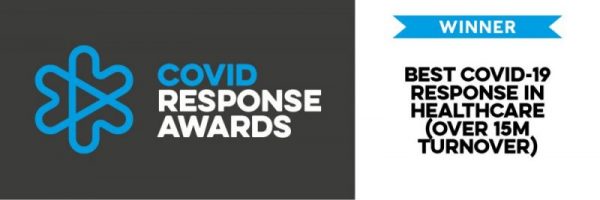80% of the adult population in this country will have a significant episode of back pain in their life. Around 10% of the population have back pain at any one time.
It can come on quite suddenly, or over time, and can be caused by lifting or moving awkwardly. However, more often than not, acute back pain comes on without any specific injury to your back. The pain can come on suddenly, or over time and can range from a mild pain or ache to quite severe pain, which can be extremely distressing and can sometimes stop you carrying out your everyday activities.
You will often hear that the best thing you can do for back pain is to lie down and rest – just one of several back pain myths that you can find below;
Back Pain Myths
- ‘I should go to bed and rest when I have back pain’
When you experience an episode of back pain you may feel like the best thing to do is go to bed and rest. However, although a small amount of rest during the day may be good for you – the best thing to do is to carry on with normal activities as much as possible. This will be made easier taking suitable painkillers on the advice of your doctor or pharmacist.
- ‘I have back pain-it must be something serious-like cancer’
Back pain is usually caused by nothing more than a sprain or strain of the muscles or ligaments of the back. Only around one per cent of people with back pain have something potentially serious causing their pain, but if you are concerned about anything – ask your GP.
- ‘My doctor has told me I have arthritis in my spine, does this mean my spine is crumbling?’
No. Arthritis is often described as ‘wear and tear’ or in medical terms – ‘spondylosis’ – both mean the same thing. They describe the normal ageing process of bones and joints. Just as hair goes grey and skin goes wrinkly, bones and joints age too – this is arthritis.
- ‘My pain has gone on for months now – this must mean something is serious is wrong’
Not necessarily. Back pain tends to have good and bad periods – this is entirely normal. If you are worried about how your back pain is progressing then make an appointment with your G.P.
- ‘My doctor has carried out tests, but the results were normal, does this mean that I am imagining my back pain?’
Certainly not! Your doctor may have carried out a series of tests to check for specific diseases. The results, if negative are usually good news as it means you don’t have the condition that your doctor was testing for. This does not mean that your pain isn’t real.
- ‘I can’t return to work/sport until my pain has completely gone’
Wrong. Activity is good for your body and especially your spine. Work is not bad for your spine and will certainly not damage it. However, you may still experience some pain whilst participating in sport or at work, but this tends to improve with time. Visit our self-help resources section for tips and advice on managing back pain.
- ‘I have back pain/sciatica, do I need an X-Ray?’
No. X-rays are not very good at picking up back problems other than arthritis, which most of us will get as we grow older.
- ‘I have back pain/sciatica, do I need an MRI Scan?’
An MRI scan will show a clear picture of the spine and its bones, joints, discs and nerves. However, an MRI scan is usually used when we think there may be a need for surgery.
- ‘I have had back pain several times, does this mean I will end up in a wheelchair?’
No.
Chronic back pain refers to pain that has not gone away after three months. Like acute back pain, it is usually caused by a strain or a sprain in the back – but the pain and distress can last for much longer and it can have a big impact on your day-to-day life. Chronic back pain can range from a mild pain or ache, to a more severe pain. This can depend on a variety of things, such as how happy you are at home or at work, if you are prone to depression or if you have had back pain before.
Chronic back pain usually requires treatment such as medication or physiotherapy. In most cases though, your back will heal itself. It is important that you keep active and continue as normal, but if your pain is severe and persistent then you should seek medical advice for diagnosis and the appropriate treatment.
Swollen muscles, joints or ligaments can also irritate the nerve causing sciatica.The sciatic nerve runs down through the back, into the buttock, down the back of the leg and round to the outside of the lower leg and foot.
When the nerve gets compressed or irritated, the brain interprets the pain as coming from the buttock or leg instead of the back, where the problem actually is. The pain is often a severe shooting pain, sometimes accompanied with pins and needles or numbness.
Nine out of 10 cases of sciatica will heal without any specialist treatment – and more than seven out of 10 patients will report improvement within four weeks.
Keeping active is very important, but it may often be necessary to take pain killers to allow you to do this.
You shouldn’t be afraid of masking the pain as much as possible, as keeping active will not do you any more harm.
Your GP will be able to recommend activities that will help you keep moving and stop your muscles getting tight and weak. It’s normal to feel some discomfort during recovery – but this is not harmful. However, if the pain persists, your GP may refer you to a specialist spinal team to help with your recovery.
In some cases, if sciatica goes on a long time (usually longer than 2-3 months), or is very severe, you may be offered an MRI scan. Depending on the result you may then be offered an injection or operation.

Acute back pain is usually short-lived and most people will see a huge improvement in their back by doing the following:
- Taking regular pain relief like paracetamol, to allow you to move normally.
- Continuing with your day-to-day life as much as possible.
- If you are not starting to get better in 1 week, or your pain is severe see your GP. Remember pain does not mean you are damaging your back, it will hurt as you move back to health.
- Taking anti-inflammatory tablets like ibuprofen as well if you need to.
- Making sure you get a good balance of rest and activity.
Treatment
Big changes have been made to the way back pain is managed.
Through this website we are supporting the GPs in giving you the help you need to manage your own back. After all, back pain is so common, you’re likely to have episodes of acute pain on and off throughout your life.
Your GP will help guide your recovery and prevention of further back pain by using the right pain killers as needed, along with some good advice.
When you need extra help they can help you decide what’s best for you. Some of the treatment options are detailed in the information leaflet to the right which you can read and download. As this website is strictly non-promotional we do not recommend specific practitioners.
People who remain active have far better outcomes than those who don’t. If you are struggling with back pain:
- Inform your manager
- Seek professional advice
- Keep mobile
- Stay at work as long as possible, this helps with your rehabilitation and recovery
Use pain killers to help you carry on – it’s the movement that will get you better, and the pain killers will allow you to move by masking the pain.
If you have to go off work sick use that time to get your back better – this might mean going out for walks, to the shops, etc. Don’t feel that just because you are off work you should not keep active – you must!
Stay in touch with your workplace. Hopefully your employer will be trying to keep in touch with you as well. Be open-minded about getting back to work as soon as possible. This can be facilitated by changes to your normal job role, hours and even where you work.
The longer you remain off work the more difficult it becomes to get back to work. The day an individual goes off sick (whatever the reason) they have about a 1% chance of still being off work a year later.
Once someone has been off work for six weeks they have a 20% chance of long term disability. This increases to 50% if they have been off for six months. People off work for a year are unlikely to work again for several years.
Avoiding Back Pain
Back pain can happen for many reasons, such as sitting, standing or moving incorrectly at home or at work. However back pain often occurs for no obvious reason whatsoever.
It can be very painful and upsetting, and you may feel as though you are unable to carry out your normal activities.
However, most cases of back pain can be treated by yourself, by simply keeping active and continuing with your day to day life.
It is also possible to prevent back pain before it starts, by following a few easy steps to make sure your back is kept in the best position possible
Keeping Active
When you have back pain it is crucial for you to keep moving.
Movement is something you can do that contributes to your back getting better. Part of that process is allowing time for the body’s natural healing to occur and this will be much better if you continue to move, even if this causes some discomfort.
It will not do any harm – remember, the spine is designed to move.
Regular exercise is vital in keeping back pain at bay by toning your muscles, allowing your body to support your back much better.
People with good fitness levels tend to experience less back pain, so get out of the house and go walking, swimming or cycling for half an hour a day. Exercise classes such as yoga or pilates are also great for your back, and visiting the gym can also help.
Keeping active is also good for you if you’re already suffering from back pain. Even if exercising feels painful, it will not harm your back and keeping active is one of the best ways to allow your back to recover.
However, it is also important to take care when exercising, as a careless twist, bend or pull could strain your back and result in an episode of back pain
- Warm up – Always make time to warm up before any exercise. Gently stretch both your upper and lower body to get your circulation going and to loosen up your muscles. If you already have back pain take extra care not to overstretch.
- Good posture – If you are lifting weights at the gym, make sure you bend your knees and use your leg muscles to lift – not your back.
- Correct equipment – It is crucial when exercising you have the correct equipment and clothing. For example, if running, always wear proper running shoes that fit properly. Also, if you are playing tennis or badminton, make sure you buy a racket that is not too bulky or heavy for you.
- Cool down – Gently stretching your muscles after exercise is just as important as warming up. It loosens your muscles, helping to prevent stiffness later. Early intervention – If you do seriously hurt your back whilst exercising, make sure you visit your GP as soon as possible. Treating sport injuries at a later date is much more difficult.
Vita is an award-winning, CQC registered healthcare provider














